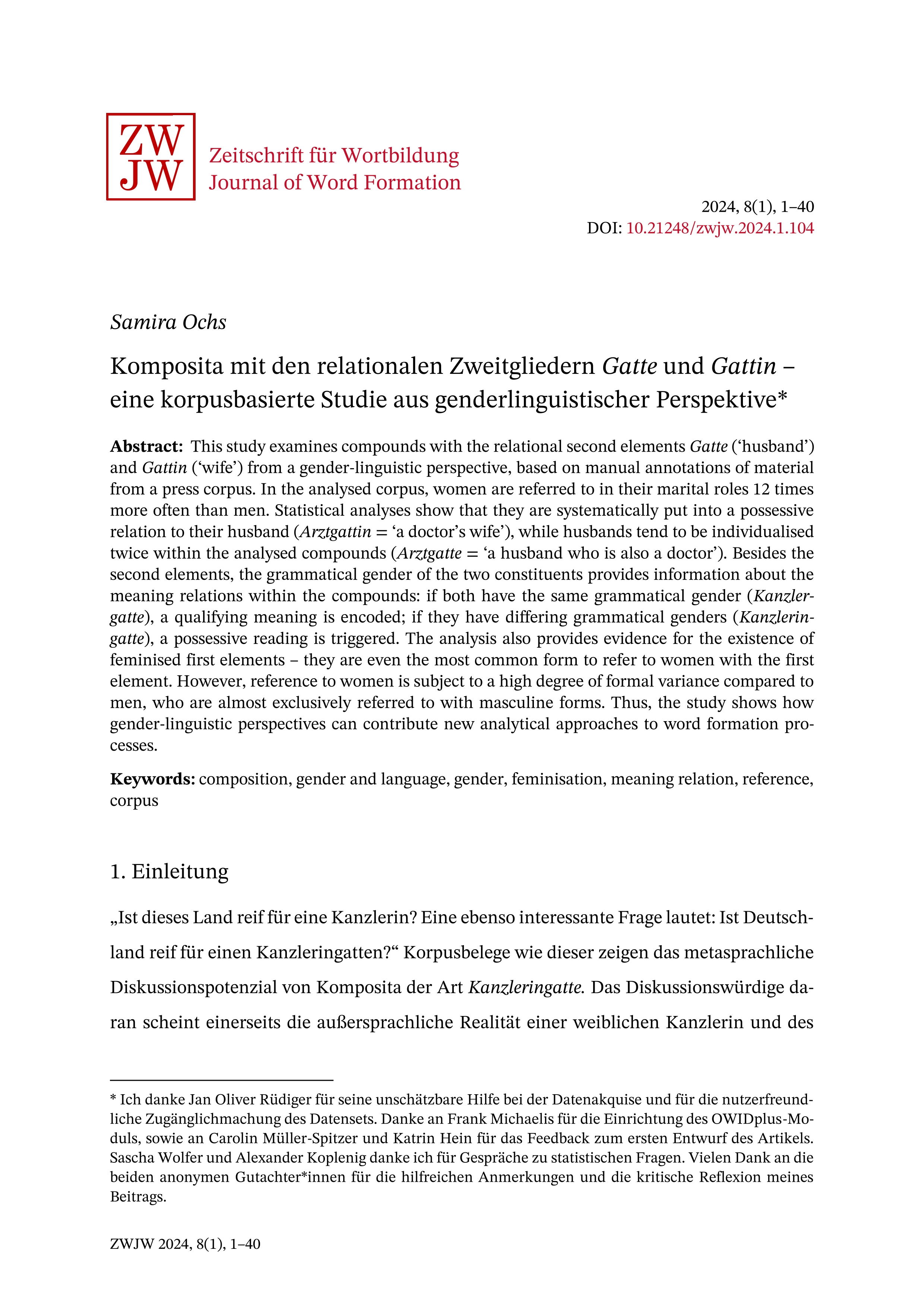Compounds with the relational second elements "Gatte" and "Gattin" – a corpus-based study from a gender-linguistic perspective
DOI:
https://doi.org/10.21248/zwjw.2024.1.104Keywords:
composition, gender linguistics, gender, feminisation, meaning relation, reference, corpusAbstract
This study examines compounds with the relational second elements Gatte (husband) and Gattin (wife) from a gender-linguistic perspective, based on manual annotations of material from a press corpus. In the analysed corpus, women are referred to in their marital roles 12 times more often than men. Statistical analyses show that they are systematically put into a possessive relation to their husband (Arztgattin = ‘a doctor’s wife’), while husbands tend to be individualised twice within the analysed compounds (Arztgatte = ‘a husband who is also a doctor’). Besides the second elements, the grammatical gender of the two constituents provides information about the meaning relations within the compounds: if both have the same grammatical gender (Kanzlergatte), a qualifying meaning is encoded; if they have differing grammatical genders (Kanzleringatte), a possessive reading is triggered. The analysis also provides evidence for the existence of feminised first elements – they are even the most common form to refer to women with the first element. However, reference to women is subject to a high degree of formal variance compared to men, who are almost exclusively referred to with masculine forms. Thus, the study shows how gender-linguistic perspectives can contribute new analytical approaches to word formation processes.




